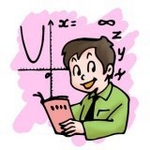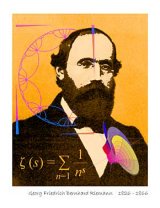
Worksheets and No Prep Teaching Resources
Reading Comprehension Worksheets
History of Mathematics

History of Mathematics
 Worksheets and No Prep Teaching Resources Reading Comprehension Worksheets History of Mathematics |
 History of Mathematics |
| edHelper's suggested reading level: | grades 9 to 12 | |
| Flesch-Kincaid grade level: | 9.73 |
| Print Twentieth Century Mathematics - Riemann to Relativity (font options, pick words for additional puzzles, and more) |
| Quickly print reading comprehension |
| Print a proofreading activity |
|
Twentieth Century Mathematics - Riemann to Relativity
By Colleen Messina |

|
 1 Mathematics moved in new directions by the end of the 19th century as technology advanced in exciting ways. The Wright brothers flew the first airplane, and gas lighting became popular. The mathematical giant of that century, Carl Friedrich Gauss, made many discoveries in mathematics, astronomy, and physics. He also contemplated unusual problems in geometry, such as how to measure curved surfaces. His brilliant student, Bernhard Riemann, solved that problem and eventually laid the mathematical foundations for Einstein's theories of relativity.
1 Mathematics moved in new directions by the end of the 19th century as technology advanced in exciting ways. The Wright brothers flew the first airplane, and gas lighting became popular. The mathematical giant of that century, Carl Friedrich Gauss, made many discoveries in mathematics, astronomy, and physics. He also contemplated unusual problems in geometry, such as how to measure curved surfaces. His brilliant student, Bernhard Riemann, solved that problem and eventually laid the mathematical foundations for Einstein's theories of relativity. |
Create Weekly Reading Books
Prepare for an entire week at once! |
| Leave your feedback on Twentieth Century Mathematics - Riemann to Relativity (use this link if you found an error in the story) |
 |
History of Mathematics
|
 |
High School Reading Comprehensions and High School Reading Lessons
|
 |
Social Studies
|